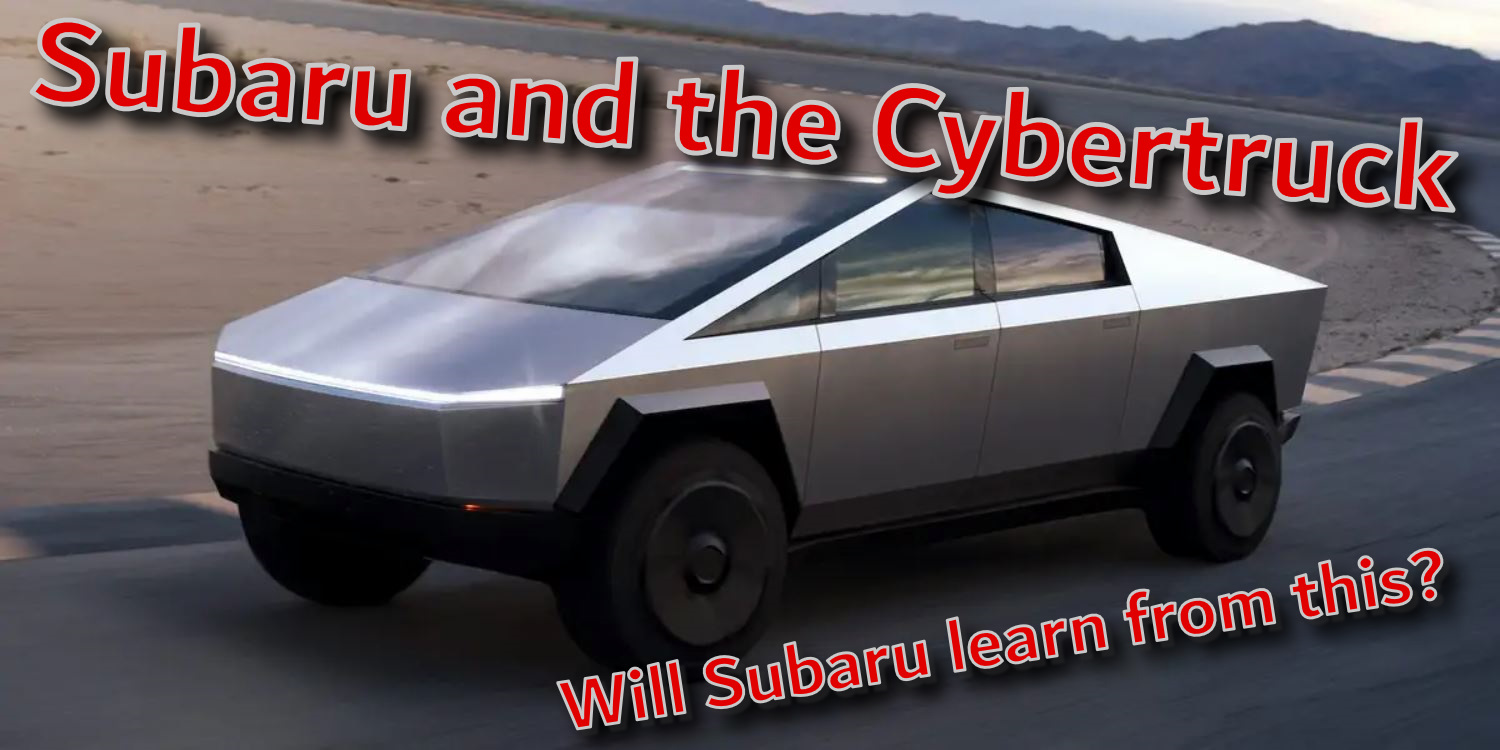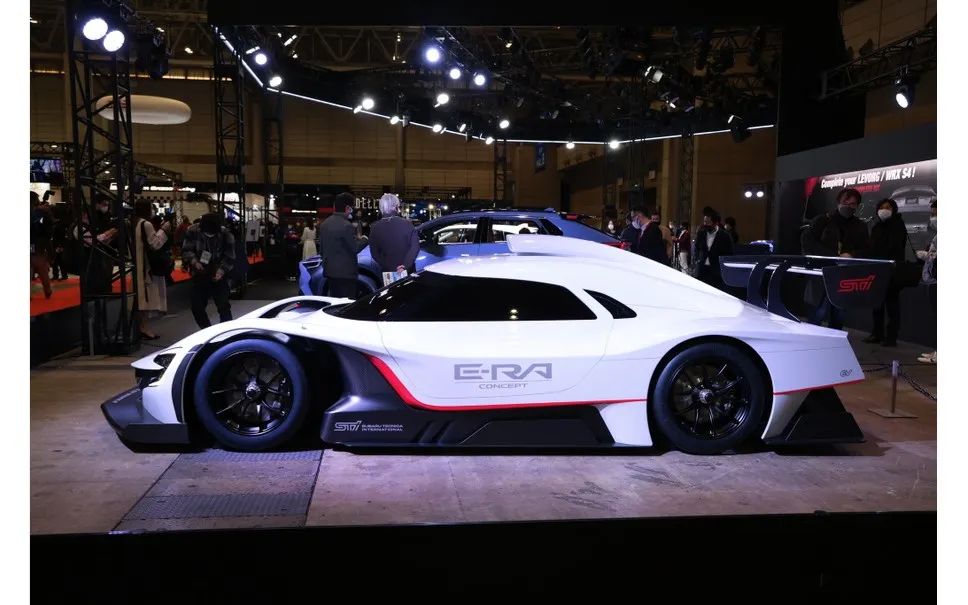We use cookies to make your experience better. To comply with the new e-Privacy directive, we need to ask for your consent to set the cookies. Learn more.
Subaru and the Cybertruck

After about 4 years of teasers and spy shots, the Tesla Cybertruck has finally been revealed. I have not been following it that closely to be honest, but I was curious about what this vehicle was actually going to be when it was finally released.
So I watched Jason Cammisa’s Hagerty video on the truck, and I have to say, there is a lot to talk about here.
Don’t worry, it doesn’t have to do with how it looks, or the fact that it is an EV.
There are some key lessons here for Subaru, and any other Auto Manufacturer for that matter.
I will say that if you are really curious of all that went into designing the Cybertruck and making it a reality, you should check out this episode of The Carmudgeon Show Podcast where Cammisa gives you a lot more background of what he saw and found our from Tesla’s engineers, etc.
The first key detail is that from the first idea of the Cybertruck, the team had only 93 days to put together the rolling concept that was revealed.
Given that incredibly short timeline, it is highly likely that that first prototype was just rolling on a modified Model S or Model X chassis. Which is fine since that car was largely a styling concept.
If you think about it though, that approach would make the most sense to develop the final vehicle as well. Tesla all ready does this with the Model 3 and the Model Y and the Model S and X. One of the main selling points between developing an electric skateboard is that you can put all sorts of different tops on it to make it into the type of vehicle that you want it to be.
This would cut down on production cost significantly, and you would have a lot of known quantities when it comes to power and battery, etc.
This is what GM is doing with their Ultium platform for instance. They are using the same skateboard or chassis (slightly modified for length or battery capacity) to build the Hummer EV, Cadillac Lyriq, Chevy Blazer, Honda Prolog, Acura ZDX, etc.
But that isn’t what Tesla did.
Instead they completely re-Engineered the entire car from the battery to the wiring, and in the process, they have pushed the technology in their vehicles, and vehicles in general ahead to a huge degree.
The standout developments to me are:
-First Tesla with 800 Volt Architecture
- A 48 volt electronics system in the car, one of the first production cars to do so
- A system that will let the 800 volt Cybertruck charge on existing 400 volt chargers
- A new process for building the structure and panels of the vehicle
- Ethernet based Can BUS that lead to a 70% reduction in cross-car wiring
- First production car with drive by wire steering
All of these are huge steps forward (though I still have a lot of mixed feelings about the Steer by Wire).
It is clear that the directive used to design the truck was not to build in the easiest way possible, or to use as much of the currently available parts as possible, but instead to rethink and redesign any and all of the systems that the truck will use in the best possible way.
In other words, to let the engineers do their best, and to encourage them to come up with new and better solutions instead of finding ways to repurpose and repackage solutions that were all ready known.
I think that there is a tendency with many car manufactures to want to stick with a platform that they find works, and to continue to work with it as long as possible because it is a known quantity, and because it is a path to be more profitable.
Think about how similar the STI was from 2004 all the way up to 2021 for instance.
Yes, they were all good cars, and Subaru did continue to refine the car and make subtle improvements through production.
But what if they would have taken this engineering clean-sheet approach at some point in the middle? The speculation was that the next STI was going to be such a step forward (before it was announced that they had canceled the WRX STI that is) and it generated a lot of excitement.
If you think back to the introduction of the WRX and STI in the early 2000's in the US market, I think you could say that it was a similar step forward at that time compared to what the Cybertruck is now. And a lot of those design elements were then put into other platforms ( like the Forester XT and Legacy/Outback as well). That step that Subaru made in 2002 and 2004 really pushed the brand forward.
But they haven't really made a similar step since.
With Subaru planning to move to build more Electric Vehicles, I would say that now is the time to make the next big step in their engineering and vehicle design. They have to because the cars will be different, and they have to because if you want to make an impact with your new cars, you need to show how you are pushing your design and engineering forward.

The early signs of concepts like the STI E-RA and Sport Mobility Concept point to Subaru moving in this direction, and their apparent split from Toyota does as well.
I hope that once more vehicles are revealed and go into production that we as Subaru enthusiasts will have a lot to get excited about.
-Jon Cooley

